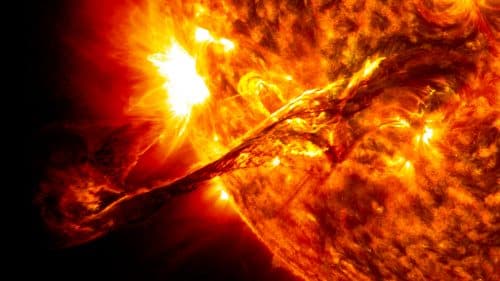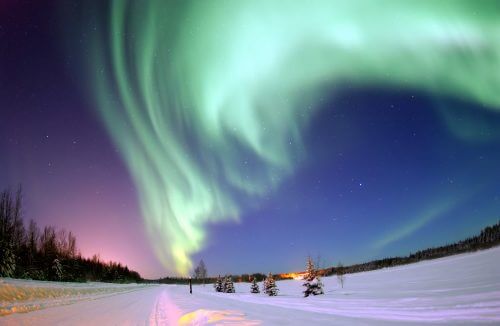Ancient documents shed light on solar activity before scientific records began

By Rachel Newer, The article is published with the approval of Scientific American Israel and the Ort Israel network 21.08.2016
Modern astronomy begins with Galileo, at the beginning of the 17th century. The activity of the sun that preceded this period is almost not recorded at all - or at least that's what scientists thought. To shed light on the history of our planet, researchers at Kyoto University in Japan began to thoroughly scan ancient texts. So far it seems that they have been able to find dozens of references to sunspots, northern aurora events and other events related to the sun since the seventh century AD, even if the terms used by the writers require more interpretation than Galileo's videos.
"[Scientists] can use ice cores, tree rings and sedimentary rocks to find clues to past weather and climate change, but solar events and the appearance of the northern lights leave almost no traces behind," says Bruce Tsurutani, a physicist specializing in plasma research at NASA, who is not involved in research at Kyoto University. "That's why we need information collected by humans themselves."
For this purpose, a team of historians and astronomers in Kyoto analyzed hundreds of ancient handwritten documents Tang dynasty in China, as well as Japanese and European manuscripts from about the same period - from the seventh to the tenth century. the researchers published their results in April 2016 In the online journal of the Astronomical Society of Japan. In the article, the researchers reported that they repeatedly came across the terms "white rainbows" and "unusual rainbows". Moreover, the researchers found that documents from the same dates in all three regions mention such plays. Since people reported the phenomenon at the same time in places so far apart geographically, the only possible explanation for this is the northern lights, says the paper's lead author,Hisashi Haikawa, a research student at the School of Literature at Kyoto University. Northern (and southern) aurora is caused when charged particles from the sun collide with particles in the Earth's atmosphere. It is usually seen as rings around the planet's magnetic poles.

In 2015, the group also published a comprehensive list of references that apparently refer to sunspots in the official history of Song dynasty in China (tenth to thirteenth century). The spots are described there as plums, as peaches or as eggs in the sun. In total, they recorded 38 sunspots, 13 unusual or white rainbows, and 193 other Northern Lights-like events, all of which were cataloged in an online, open-search database.
There is no way to know for sure if the texts refer to the sun's activity, he says Hiroaki Isobe, an astronomer and one of the authors of the article. The interpretation of the ancient language users is a unique challenge within this scientific enterprise, as is establishing the conclusions about the true nature of the events that the ancient writers often interpreted as prophetic signs. "[The descriptions of] tsunamis and earthquakes are clear, but it is very difficult for historians to know what a description like 'the sky was red' means," says Aikawa. The Kyoto team hopes to gather more evidence to verify their conclusions by collaborating with researchers from Europe, western Saudi Arabia and South Korea who are also conducting historical studies of solar-related events.
Long-term recording of the sun's activity could eventually reveal patterns that would provide researchers with more information about the shift of the Earth's magnetic poles, for example, and the sun's magnetic effect, if any, on our world's climate. Such documentation could also allow for a better understanding of solar storms, which can burn up satellites, cause electrical systems to collapse, and disrupt the operation of electronic communications systems. "To predict the future we must know the past," says Isova.
